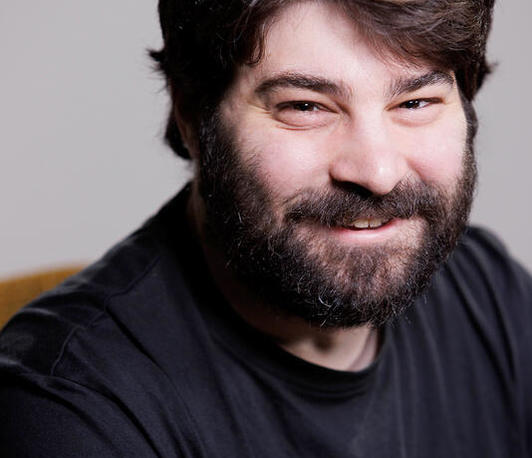Decoding the sensory bases of navigation and settlement behaviours in a zooplanktonic marine chordate.
- Datum: 24.05.2024
- Uhrzeit: 11:00 - 12:30
- Vortragende(r): Oleg Tolstenkov, Marios Chatzigeorgiou
- Ort: MPI for Intelligent Systems, Max-Planck-Ring 4
- Raum: Seminar Room + Zoom
- Gastgeber: Jennifer Li/Drew Robson (Lílian de Sardenberg Schmid)
- Kontakt: jennifer.li@tuebingen.mpg.de

Abstract: The Earth’s oceans brim with an incredible diversity of microscopic lifeforms, including motile planktonic larvae, whose evolutionary fitness critically depends on effective dispersal in the water column and subsequent exploration of the seafloor to identify a suitable settlement site to undergo the transformative process of metamorphosis, giving rise to benthic sessile adults. How their streamlined nervous systems mediate navigation and sensory perception in complex marine environments is a fascinating yet largely unexplored question.
Here we will introduce the genetically tractable marine non-vertebrate chordate Ciona intestinalis which has allowed us to gain exceptional insight on the molecular and cellular bases of zooplanktonic navigation and sensory transduction.
We will examine how Ciona is a sensory multitasker, leveraging polymodal sensory neurons to transduce diverse chemical and mechanical cues, which promote or impede the ethologically relevant settlement behavior. Combining whole-brain imaging and chemogenetics, we will demonstrate that stimuli encoded at the periphery are sufficient to drive global brain-state changes to promote or impede larval settlement behavior.
Subsequently, we will show how by leveraging genome editing, quantitative behavioral analysis and calcium imaging we have identified two members of the evolutionarily conserved Anoctamin superfamily as novel players in the zooplanktonic molecular toolkit that controls polymodal sensory transduction.
Then we will talk about an ongoing study where we investigate the behavior of swimming Ciona larvae under naturalistic conditions, specifically focusing on their response to water flow and grouping context. By employing deep learning tools for pose estimation, in conjunction with microfluidics and calcium imaging techniques, we scrutinized the rheotactic behavior of larvae and their sensory processing. Our findings reveal pronounced positive rheotaxis in Ciona larvae, with notable behavioral alterations observed in response to changes in group density. We suggest that early chordates possessed cellular and behavioral correlates of rheotaxis like those found in vertebrates and propose a hypothesis regarding the neural circuitry that potentially underlies rheotaxis.
Bio: Marios is a Group Leader at the Michael Sars Centre in the Faculty of Natural Sciences & Mathematics at University of Bergen. He received his BSc in Biochemistry at Imperial College London and his Doctorate from the University of Cambridge. He completed his post-doctoral training at the MRC Laboratory of Molecular Biology before joining the Michael Sars Centre. His lab explores the evolution, development and function of chordate nervous systems using a systems neuroscience approach combined with evo-devo studies.
Oleg, postdoc/researcher in Marios's lab. PhD in Biology, Abo Academy, Turku, Finland. Before Norway, he was a postdoc in Alexander Gottschalk's lab, at Goethe University, Frankfurt, Germany.
Lab's webpage: https://www.chatzigeorgioulab.com/
Access to the meeting: Zoom Link